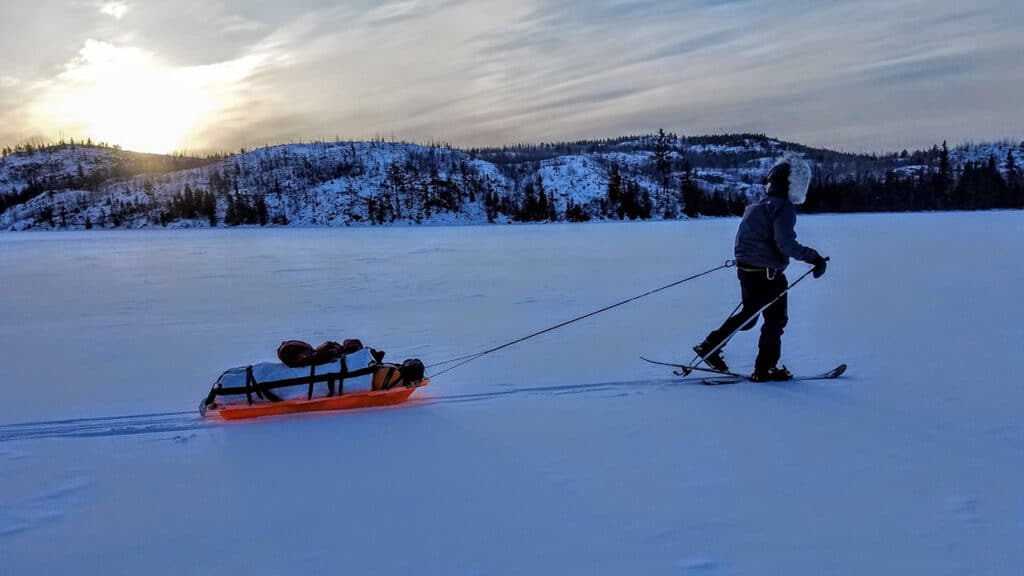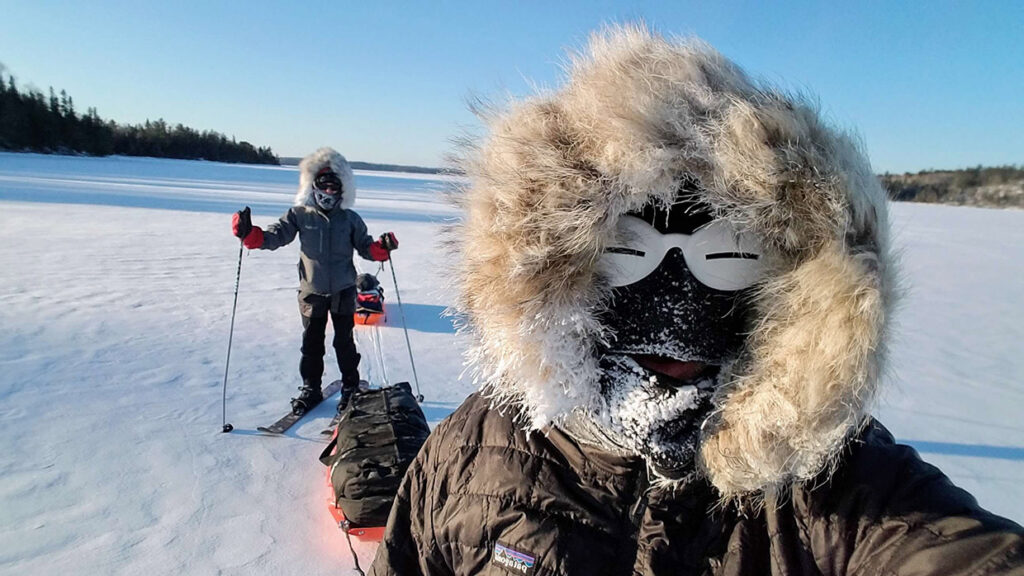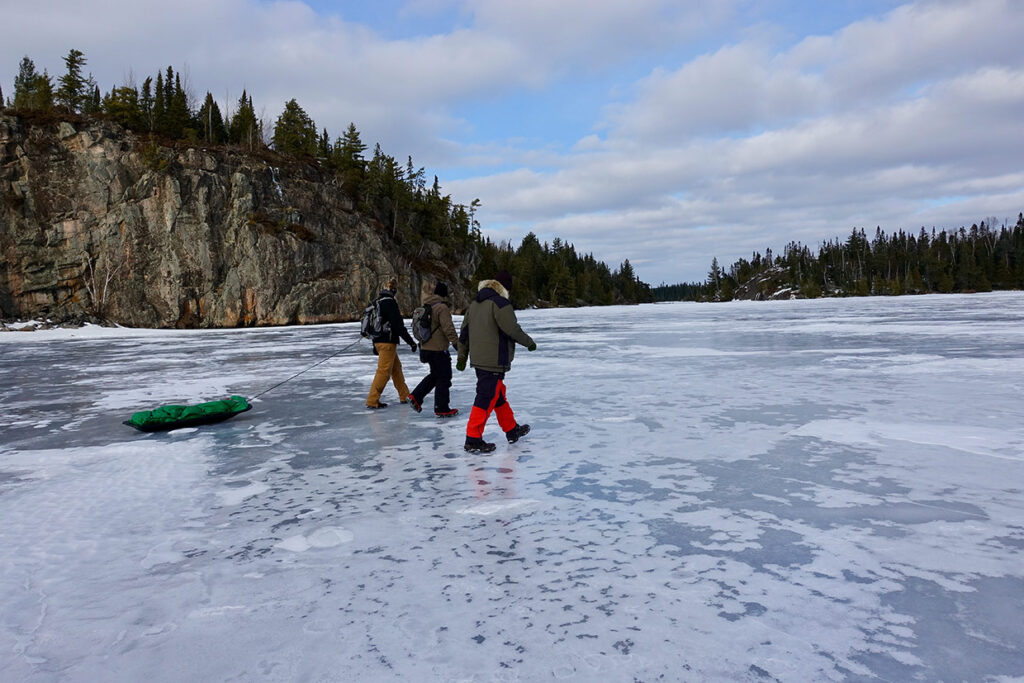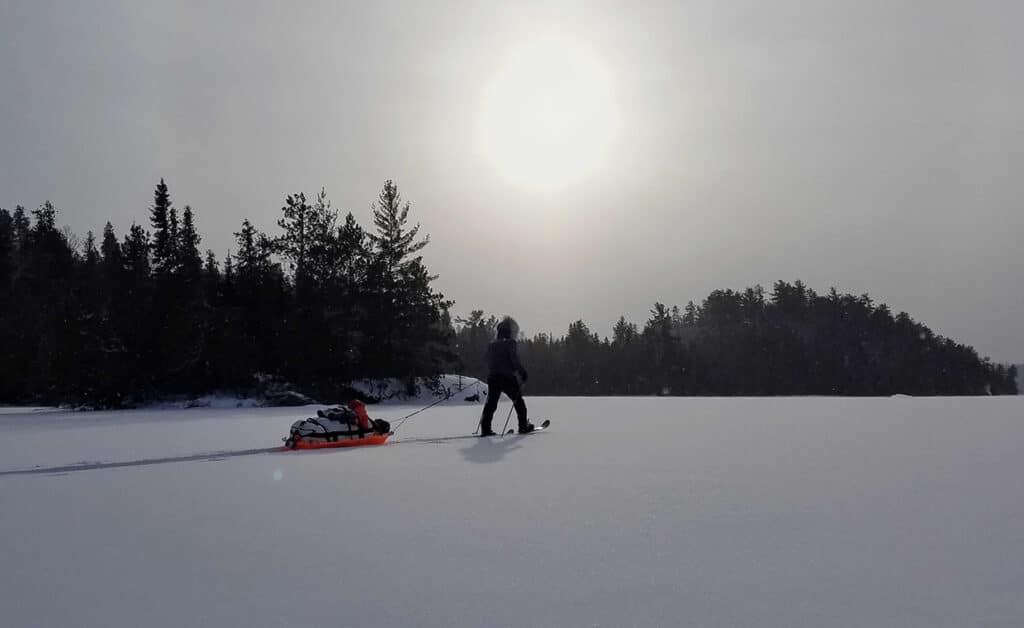
We might call it canoe country, but when snow blankets the Quetico-Superior wilderness, travel requires fewer paddles and more specialized footwear. What you strap to your feet for northwoods adventures ultimately depends on current conditions and personal preference. How deep is the snow? Is it crusty or hiding slush? Avid winter campers share tips for heading off the beaten path with snowshoes, skis, and boots so you can get the most out of the winter wonderland.
Snowshoes or skis?
Many people automatically reach for snowshoes for winter outdoor recreation and for good reason. Nothing compares with snowshoes for user-friendliness or breaking a trail through deep, powdery snow. Since they don’t require special skills or footwear you can simply strap them to your boots and start walking.
Designed to keep you floating near the snow surface, snowshoes offer a slow, but steady pace and prevent you from “postholing,” or having your foot punch through the snow surface and sink down to your calf (or beyond).
“Snowshoes are the great equalizer,” said Bear Paulsen, a long-time Boundary Waters winter camper. “Everyone goes about the same speed on snowshoes.”

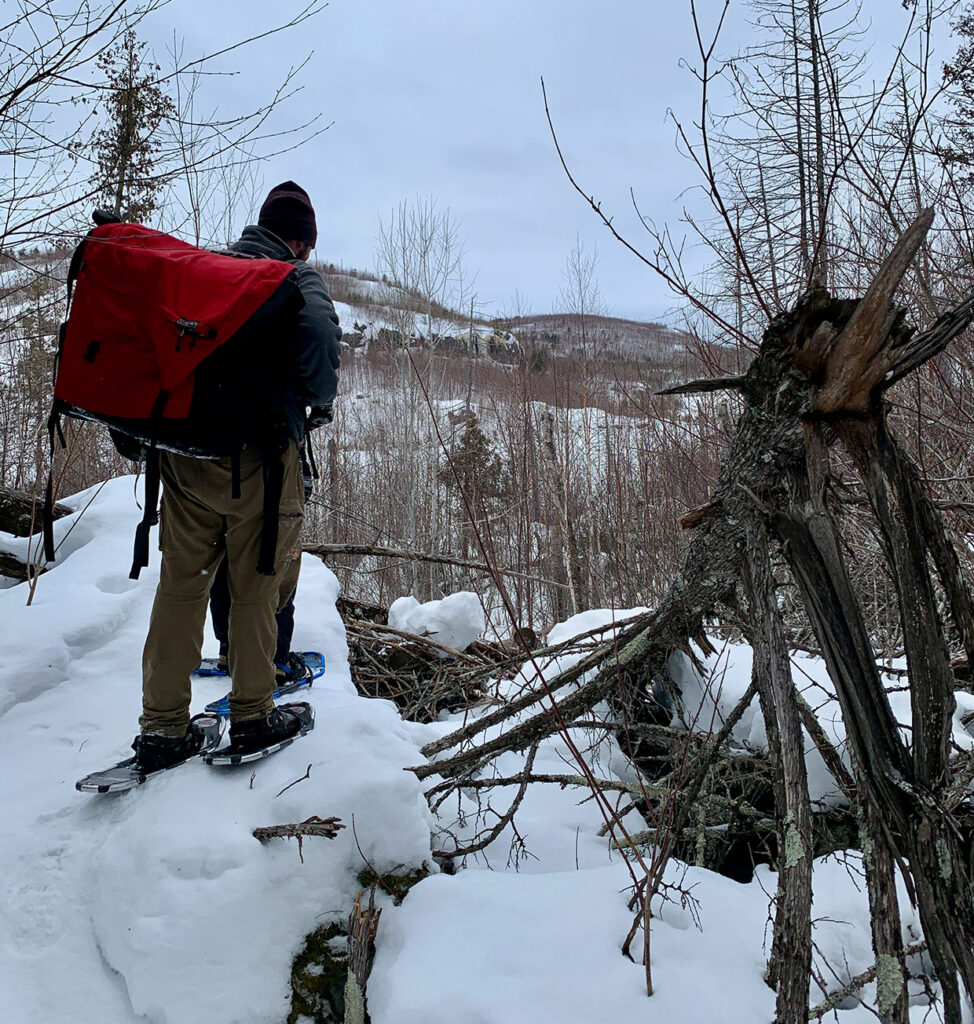
Winter campers can haul large loads when they’re on snowshoes and other than boots, they’re the most maneuverable winter footwear option, Paulsen shared. He dislikes them however for their plodding pace and stomping gait. If you’ve never snowshoed before, start out with a smaller pair of snowshoes to minimize the inevitable tumbles from stepping on your own (now very large) feet as you get used to them.
Snowshoes are designed for use in fresh or soft snow. Avoid using them on firm packed surfaces and be careful when crossing lakes that may have formed slush. Slush, the bane of all winter wilderness recreation, is formed when water seeps up through ice cracks and mixes with snow. If you’ve ever hiked across a frozen lake and suddenly found your foot sinking into a squelching, heavy, watery mess, you’ve found yourself a slush pocket. Slush can immediately coat your snowshoes in a thick, heavy layer that’s both difficult to remove from the snowshoe and difficult to extract your boot from the snowshoe. If you see an obvious dark patch that doesn’t look like a shadow on the lake you’re crossing, it’s best to skirt around it if you’re wearing snowshoes.
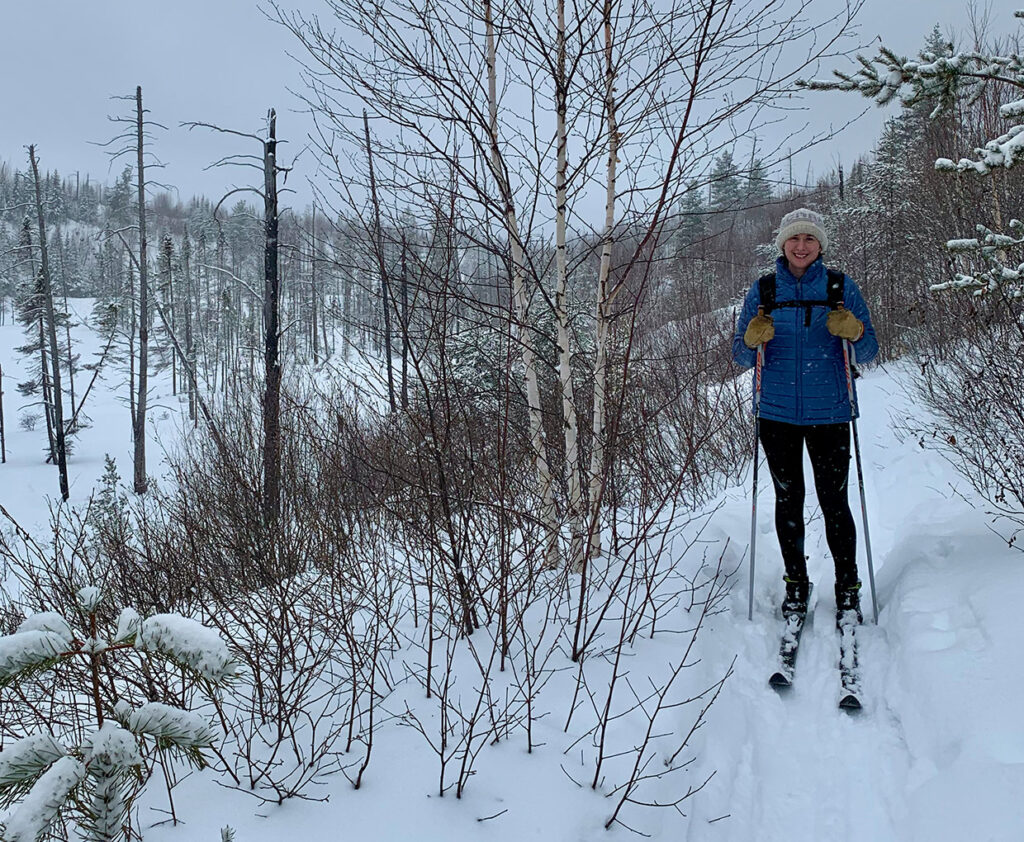
Backcountry Skis – speedier but take heed
Many winter wilderness enthusiasts turn to backcountry skis. As the name implies, these skis are designed to go off the groomed trail. Too wide to fit in standard cross-country tracks, these skis help you float across slush pockets and their ability to glide across the snow make them markedly speedier than snowshoes. Their width also adds stability compared with standard cross-country skis.
“Snowshoes are 4-wheel drive low,” Paulsen said, “skis are the sports cars. It’s easier to travel farther and you go faster.” But with speed, comes danger. “If you go winter camping, your greatest dangers are skis on portages,” Paulsen said.
To avoid an unplanned (and dangerous) meet and greet with a tree trunk at the bottom of a hill, Paulsen recommends having kicker skins that you can take on and off your ski bottoms as conditions require. These adhesive skins help you climb up hills you would otherwise have to take your skis off for and also slow you on downhills. He also points out that the portage trails nearest Boundary Waters entry points are usually easier to ski since they tend to be wider.
Unlike snowshoes, there’s a definite learning curve with backcountry skis. Paulsen recommends people take the time to learn how to use their poles properly as that will help with both flats and inclines. They also require specialized footwear which often aren’t warm enough for the coldest temperatures.
Although backcountry skis are designed to go off-trail, they can only break trail in up to about six inches of snow. Any deeper than that and they turn into very awkward, very long shovels attached to your feet. For deep snow conditions, you might prefer to break a trail in your snowshoes before strapping on the backcountry skis to cover the same terrain.
Hok skis are ‘all-terrain’
If you can’t decide between skis or snowshoes, maybe the Hok ski is right for you. These short wide skis with universal bindings are designed specifically for rugged backcountry use. They provide the float of snowshoes with the low-impact, glide of skis.
“The Hok is the ATV of winter travel in the BWCA,” said Boundary Waters camper Rob Henderson. “They will go anywhere you want – just not very fast. The difference of pace between a good skier and a bad skier on Hoks is very minimal.”
Like snowshoes, Hok skis are designed for slow, but steady movement through the woods. They can handle deeper snow conditions than backcountry skis and they perform well in lake slush.
“Anytime you can avoid hitting the slush is a win as it takes time to stop and scrape off your skis, which presents an opportunity to get cold wet hands,” he said. “Anyone who has spent much time up in the BWCAW in the winter has tons of slush stories – just ask them!”
Henderson has been on many adventures on his, including skiing from Saganaga Lake down the U.S./Canada border to Fall Lake. “I think the primary attraction to them is the ¾ length integral skin,” he said. “This skin gives great traction on the portages, even the steepest ones seem to be no problem climbing straight up.”
Backcountry skis often need to be removed for sharp inclines, but Henderson said he can go straight up and over portages with his Hok skis while pulling a 70 lb sled. He also likes that he can wear his warmest winter boots when using Hok, which saves him from having to pack an extra pair of footwear for in camp.
Insulated boots and cleats
Not all winter conditions demand specialized gear. By mid-late March, the snowshoes and skis usually get set aside except after significant snowfall. As days lengthen, sunshine melts lakes’ snow cover into a very firm, almost concrete substance that’s treacherous to ski on and doesn’t require snowshoes. This late in the winter, most trails have already been so packed down by previous snowshoers that you can hike those in your insulated boots as well.
In extreme warmups, the snow melts down to glare ice on lakes. A pair of traction cleats will ease wilderness travel by keeping you from slipping and sliding the whole way across the lake.
It takes trial and error to figure out what works best for you, taking a class, renting gear from a park or outfitter can get you started. Experimenting with skis, snowshoes and insulated boots for wilderness adventures means you can get the most out of canoe country’s longest season.
MORE INFORMATION:
- Visit Cook County: The Best Snowshoe Trails in Cook County MN
- Explore MN: Where to Go Winter Camping in Minnesota
- Winter Activities at Voyageurs National Park



